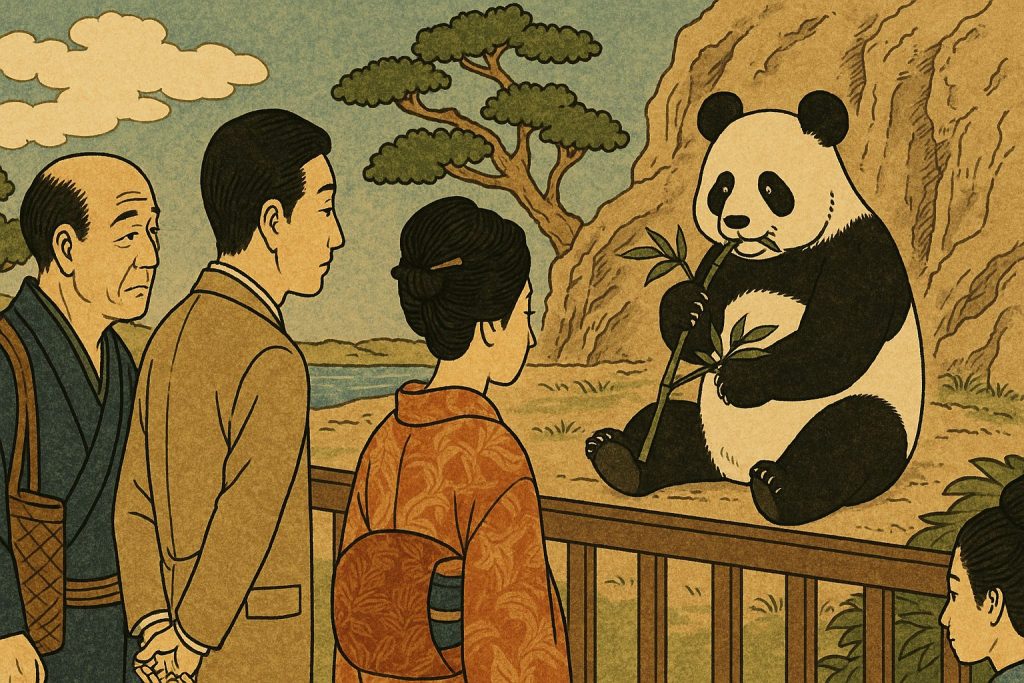If you’ve ever been to a zoo outside of Japan—say, the San Diego Zoo, the Berlin Zoo, or even a modest suburban animal park—you’re probably familiar with the general vibe: children yelling “LOOK, DAD! IT’S A LION!” while clutching cotton candy, zookeepers giving microphone-amped feeding shows with enthusiastic narration, and animals either lazily sunbathing or staring at the chaos with the same existential dread you feel during rush-hour traffic.
Now, take all of that energy, dilute it with several centuries of Confucian hierarchy, sprinkle on a thick layer of silent observation, and remove 98% of the volume—and voilà, you’ve got yourself a Japanese zoo.
The Art of Observing Animals Quietly
One of the first things you’ll notice at a Japanese zoo is the silence. No, the animals aren’t silent. The humans are.
You won’t hear kids shrieking “MONKEYS!” or parents calling for a stroller they lost near the penguin pool. Instead, what you’ll encounter is a crowd of people standing in front of an enclosure—say, a bear pit—gazing thoughtfully, almost reverently, at a brown bear chewing a cabbage with the grace of a Zen monk.
The only sound might be a hushed “He’s cute, ne…” or the rustle of a pamphlet as someone double-checks the feeding schedule, which they will not attend out of fear it may cause “meiwaku” (a disturbance).
In contrast, a foreign zoo’s motto might as well be: “Come for the animals, stay for the chaos!” Japanese zoos feel more like temples where lions are worshipped behind Plexiglass altars.
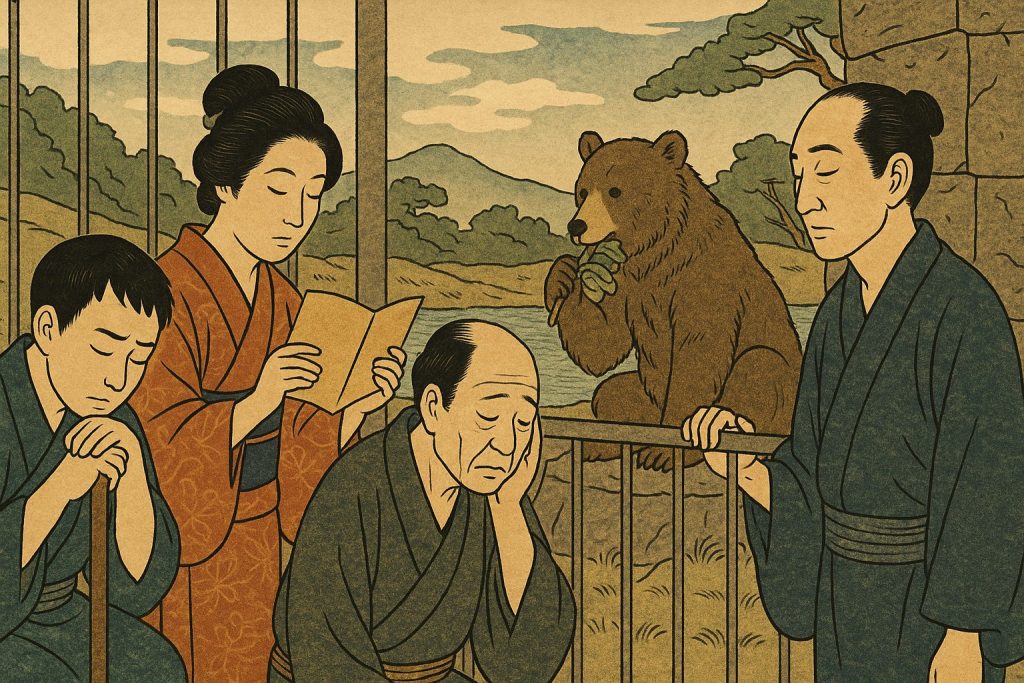
“Do Not Disturb the Animals”: Taken Very Seriously
In Western zoos, the phrase “do not tap the glass” is a polite suggestion—about as effective as telling people not to push the elevator button repeatedly. In Japanese zoos, however, this instruction is treated with religious fervor.
Not only will no one tap the glass, they will actively stare down anyone who breathes too loudly near it. If a child dares to yell, parents immediately bow-apologize, pull them away, and possibly issue a handwritten apology to the meerkat family.
In foreign zoos, animals are on display; in Japanese zoos, it’s more like you’re visiting a distant relative at a convalescent home and trying not to be a bother.

The Most Japanese Signage You’ll Ever See
Every zoo has signs, but Japanese zoos take it to another level.
Where Western zoos put “Do Not Feed the Animals” in three languages, Japanese zoos go full haiku:
“The animals have stomachs too—
Human snacks are hard to chew.
Kindly let them be.”
Sometimes, signs will feature adorable mascots—a cartoon panda in a lab coat or a monkey in a bowtie—explaining complex biology with the cuteness of a children’s show. Don’t be fooled. The message is deadly serious.
Also, there will be polite reminders like “Please understand the tiger may be resting today,” or “The capybara may not wish to interact at this time.” In short: animals are not here for your entertainment. They’re here on vacation, and you’re the intruder.
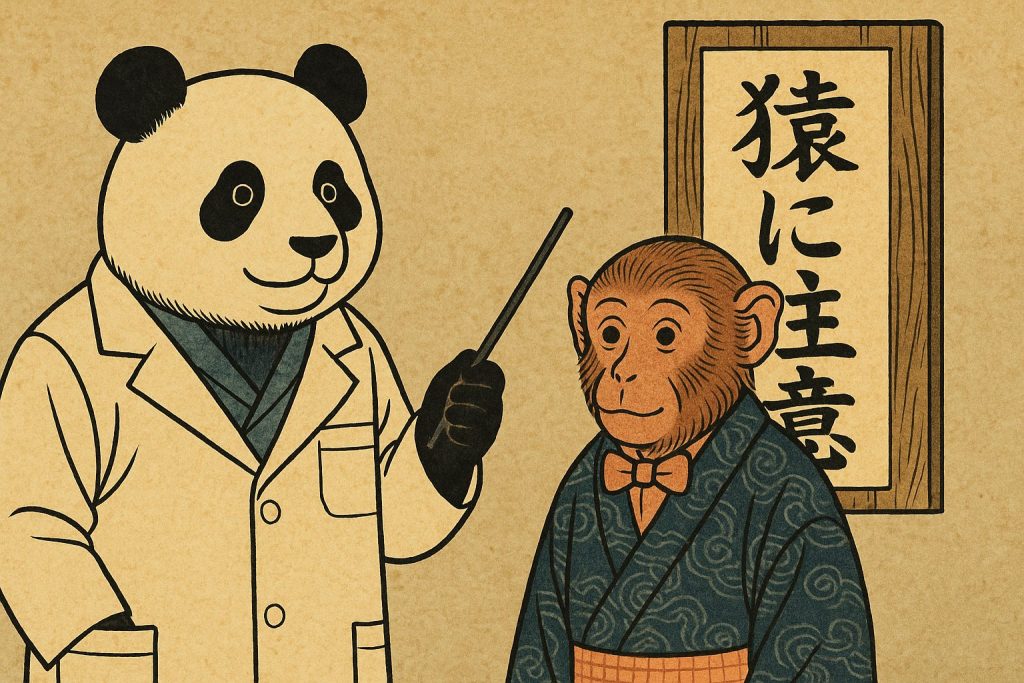
Feeding Time: The Most Passive Event in the Zoo
If you’ve seen a sea lion feeding show abroad, you probably remember clapping, splashing, fish tossing, and the unmistakable voice of a zookeeper yelling “Give it up for Sasha!” while the crowd goes wild.
Now compare that to a Japanese feeding session, which is less like a concert and more like a silent tea ceremony conducted with lettuce.
At a Japanese zoo, the keeper might quietly enter the enclosure, place some cut vegetables in a wooden tray, give a gentle bow to the audience, and back away while the animal approaches in its own time. No music, no microphone, no “Sasha.”
Visitors watch in silence, perhaps taking notes or sketching the animal’s posture with the same intensity as a graduate student in Kyoto University’s Primate Research Institute.
The Gift Shop is a Shrine to Discipline
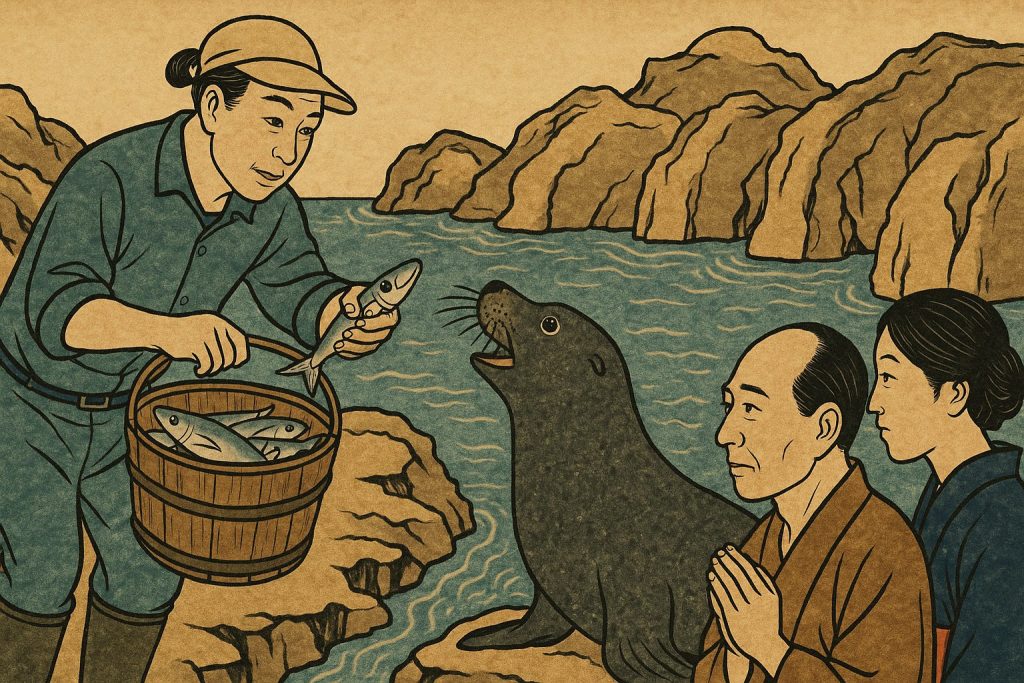
The Gift Shop is a Shrine to Discipline
Japanese zoo gift shops are organized with military precision. There are polite lines. Customers do not open packages “just to see what’s inside.” Everything is immaculately arranged by animal species, color palette, and possibly blood type.
Compare this to the Western zoo gift shop, where plush giraffes are toppling off racks, someone is trying to find the last “L” size shirt, and a 4-year-old is chewing on a snow globe.
In Japan, the cashier will thank you at least four times, gift-wrap your penguin eraser individually, and give you a souvenir bag with artwork so beautiful you’ll hesitate to throw it away for three years.
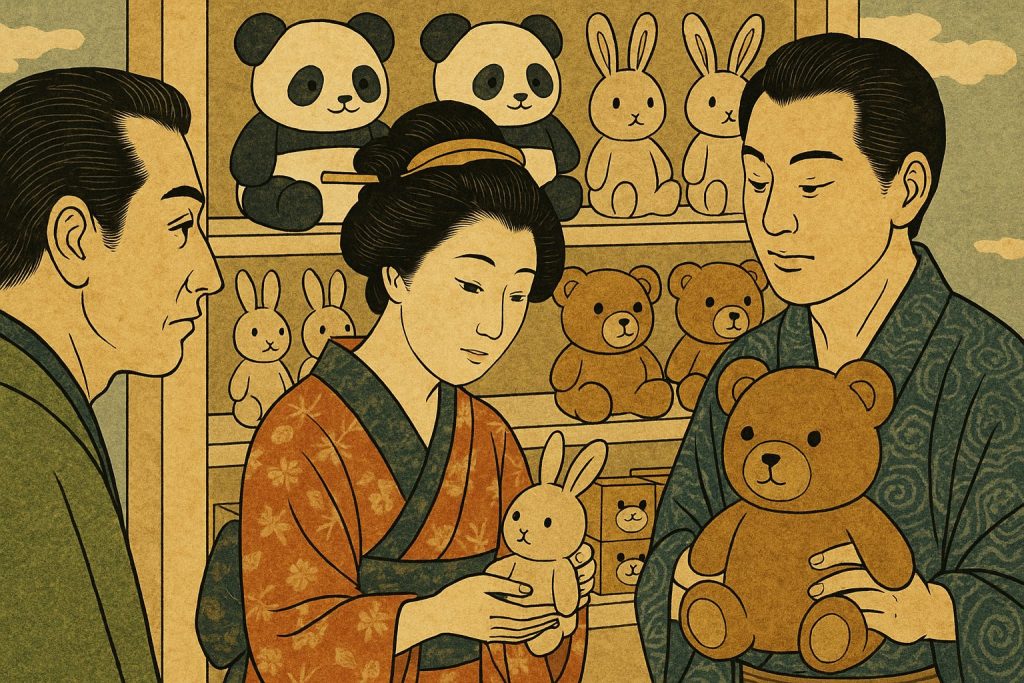
The Animals Are… More Japanese Than You Think
There is also something distinctly Japanese about the animals themselves. Or perhaps it’s projection. Let’s examine the behavioral patterns:
- The Japanese macaques? Clearly the office workers of the zoo. Sitting in groups, avoiding eye contact, occasionally grooming one another with awkward politeness. You can almost hear them saying, “otsukaresama desu” as they pass.
- The flamingos? An exact parallel to Japanese high school girls: pink, perfectly coordinated, always in groups of three to five.
- The capybaras soaking in hot baths in winter? The only animals in the world that live closer to the Japanese ideal of retirement than actual humans.
Even the elephants seem calmer. Some visitors theorize it’s because the animals themselves have absorbed the energy of the culture. In Japan, even the tigers know better than to cause a scene.

The Human Exhibit: Foreign Tourists
Of course, no zoo is complete without its own human exhibit: the confused foreign tourists.
They stand out, not only because they’re often 15 decibels louder than the rest of the crowd, but because they’re the only ones trying to make the lion “do something.” They’re also the only people asking, “Why is everything so quiet?” out loud.
Sometimes they commit the ultimate sin—eating a hot dog while walking between enclosures. Gasps echo down the penguin corridor. A grandmother discreetly steps in to hand them a napkin.
If you listen closely, you’ll hear their whispered final words: “Wait, did I just get shushed by a child?”

Zoos as Mirrors of Society
At the end of the day, zoos—like public transportation and waiting rooms—are cultural mirrors. In the West, they reflect individualism, entertainment, and cheerful chaos. In Japan, they reflect order, consideration, and existential observation.
Foreign zoos say: “Come see the wild side of nature!”
Japanese zoos say: “Come witness animals in a carefully curated environment, and please keep your emotions inside the designated polite zone.”
And that’s not necessarily bad. In fact, for some, it’s deeply comforting.
There’s something oddly soothing about watching a red panda nibble bamboo while a dozen people silently nod in appreciation, no phones, no selfies, just shared reverence for a creature that clearly has no idea it’s become a metaphor for social grace.
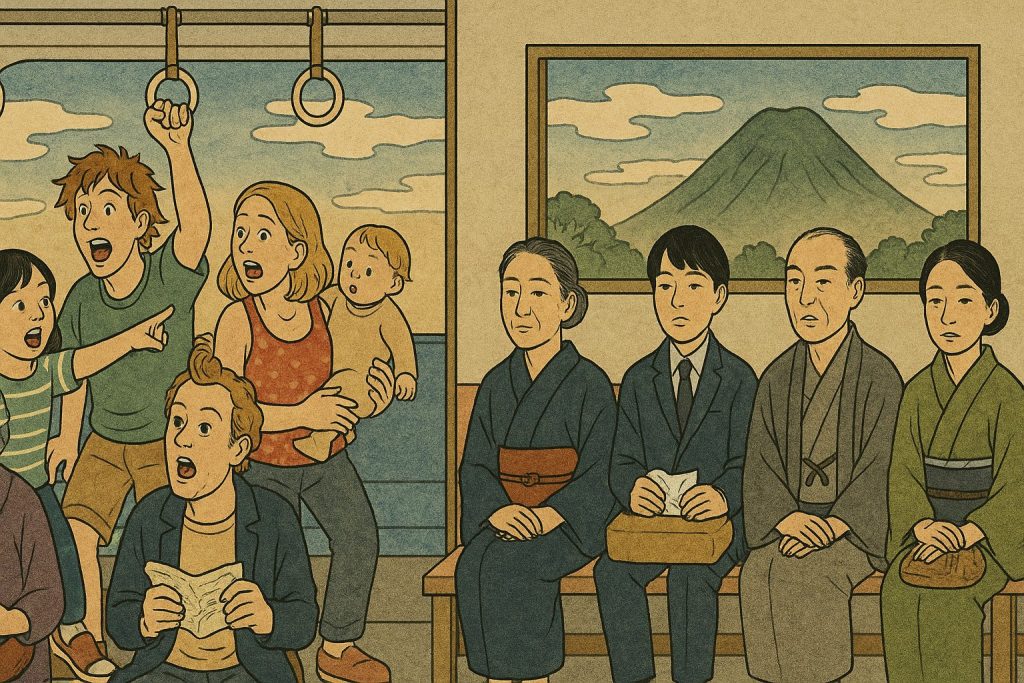
Final Thoughts: Where the Wild Things Are… Respectfully Displayed
So, next time you find yourself in Japan, skip the robot restaurants and Mario Kart cosplay. Head to a zoo. It’s one of the most revealing places you can go if you want to understand the Japanese psyche—and see how deeply social harmony extends, even into the animal kingdom.
Just don’t tap the glass. And for the love of all that’s sacred, don’t expect the animals to perform. They’re Japanese now. They’re on break.
Would you like an SEO-optimized title, slug, meta description, or suggested categories/tags for WordPress next?
